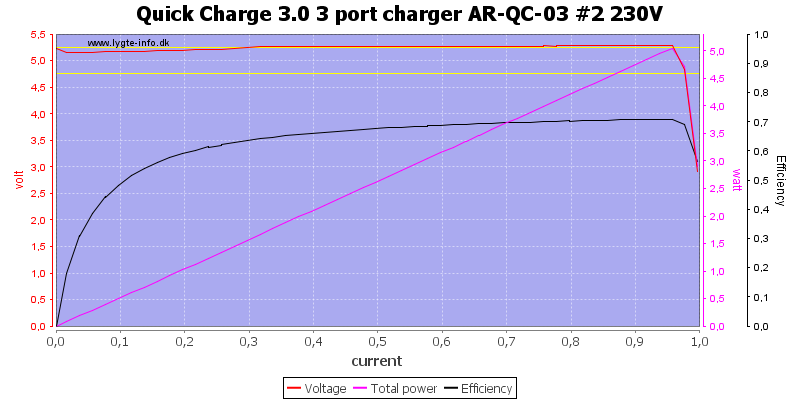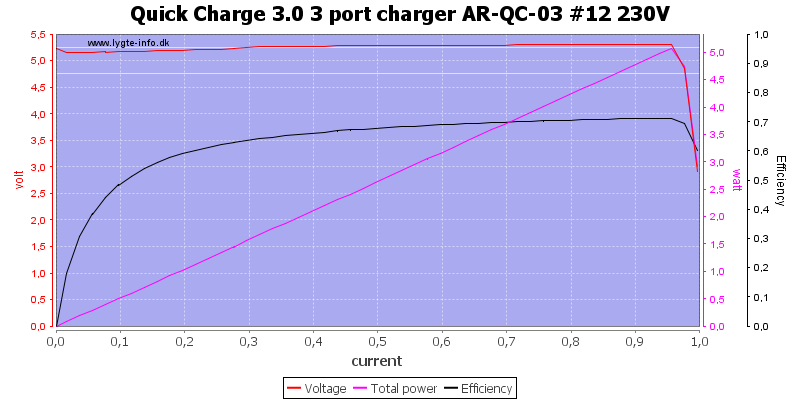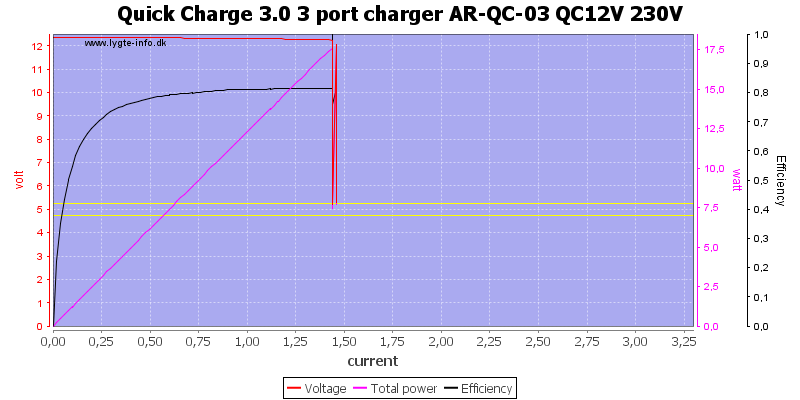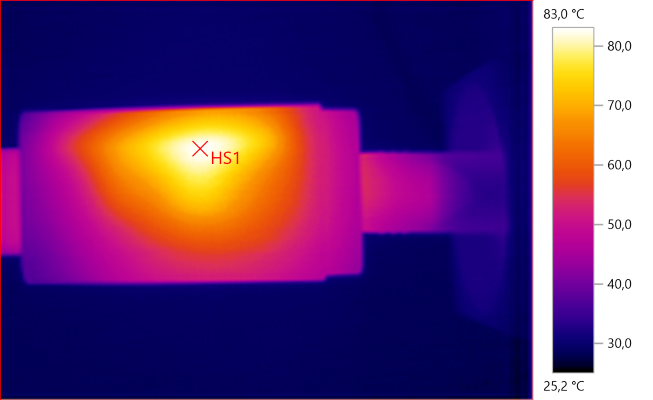Quick Charge 3.0 3 port charger AR-QC-03

Official specifications:
-
Item Type: QC 3.0 Quick Charging Wall Charger Adapter Station
-
Material: ABS+PC
-
Color: Orange
-
Plug Type: US Plug
-
Interface: 3* USB
-
Input: AC 100V-240V, 50/60Hz, 0.5A
-
Output: 5V/3A, 9V/2A, 12V/1.5A
-
QC3.0 Output: DC 5V/2.4A, 9V/1.8A, 9V-12V/1.5A
I got it from ebay dealer: to-the-better







Measurements
-
Power consumption when idle is 0.2 watt
-
Both USB output is usb charger (DCP)
-
QC output is auto coding with Apple 2.4A, Samsung, DCP, QC3, Samsung-AFC, Huwai-FCP
-
Minimum QC3 voltage is 4.3V
-
The two outputs are in parallel.
-
QC and 5V outputs are not directly connected.
-
Weight: 48.3g
-
Size: 67 x 45.1 x 27.2mm

Output current on the first output is slightly below 1A, this is not very good for a 2.1A rated output.

Second output is the same.

And when used in parallel it is again the same, i.e. about 1A total available for two 2.1A rated outputs.

At 120VAC the current is slightly lower.

The QC output can deliver 3A.

At 9V QC is about 1.8A

And at 12V it is 1.4A

I did the load test at 5V 0.9A and 12V 1.2A and it could handle that for 1 hour.
The temperature photos below are taken between 30 minutes and 60 minutes into the one hour test.

M1: 61.8°C, HS1: 73.1°C
HS1 is way above the QC transformer, M1 is the metal piece inside the charger.

HS1: 83.0°C
HS1 is the circuit board near the 5V transformer.

M1: 82.3°C, HS1: 87.6°C
HS1 is below the QC transformer and M1 is below the 5V transformer.

M1: 82.1°C, HS1: 99.8°C
HS1 is the circuit board near the QC transformer (This is rather hot) and M1 is near the QC rectifier diode.

M1: 52.0°C, HS1: 69.1°C

At 0.5A the noise is 118mV rms and 726mVpp.

At 1A the noise is 135mV rms and 850mVpp.

At 5V 0.5A QC the noise is 90mV rms and 1470mVpp.

At 5V 2.5A QC the noise is 243mV rms and 1878mVpp.

At 12V 1.2A QC the noise is 115mV rms and 1807mVpp, this is a very high noise level at any current.
Tear down

This type of enclosure is often easy to open: Tie the bottom down in a vice and whack the top with a mallet, it worked fine here.

A metal piece inside the enclosure, it could have been for heat spreading, but it is above the circuit board and not touching anything. This means it is probably to make the charger heavier,

There is a fusible resistor at the mains input, one switcher IC (U1: DK112 18W switcher) with opto feedback (U2), there is a rectifier diode (D2) on the low volt side, this uses the large transformer and is for the QC output. The 5V output uses the small transformer and a smaller diode (D5).
Between the two transformers is also the “safety capacitor” (CY1) that is a 1kV non safety type.





On this side is the bridge rectifier (B1) and the switcher (U1: Marked DP3773) for the 5V output. On the QC side is the QC controller (U3: Marked FT4kFA) and a reference (Q1: 431).



The isolation distance with a slot in the circuit board is minimum 4mm, here it is about 3mm and the same without a slot.
Testing with 2830 volt and 4242 volt failed the 4242V test, this means it is unsafe in 230V countries.
Conclusion
Performance of this charger is fairly bad, the 5V can only deliver 1A and both 5V and QC has a lot of noise.
Safety is even worse: It do not use a safety capacitor and isolation distance is way too low. I do not like that the enclosure is nearly 100°C on the outside.
Notes
The charger was supplied by a reader for review.
Index of all tested USB power supplies/chargers
Read more about how I test USB power supplies/charger
How does a usb charger work?
